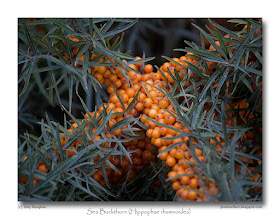 click photo to enlarge
click photo to enlargeOld walls seem so much more appealing than new ones: I've photographed and posted a few recently. I don't think that's simply a natural proclivity: growing up in the Yorkshire Dales exposed me to many fine old walls early in life, and may be responsible for my predilection. When I think about what draws me to them it's surely the interesting textures and materials, the random elements, the greater variety of colours, and the sense that an aged wall has seen and been through a lot, that is at the heart of their attraction.
This part of the Marriott Warehouse on the east side of South Quay, King's Lynn, Norfolk, is a good example of such a wall. It shows the north end of the ground floor of the river-facing elevation of the old warehouse. The lower wall with the large pieces of ashlar dates from the early 1300s when it was first built, perhaps for the Hanseatic League, as a single storey structure. At that time its walls were probably wholly made of stone. It was extended upwards in brick in the 1400s and 1500s. In the 1700s the building was extensively re-modelled with new doors and segmental arched windows (like the one shown) inserted. Further modifications kept the building usable in the 1800s and 1900s. The iron tie-beam, an "S" shaped end of which can be seen in the photograph, probably dates from the Georgian or Victorian period, and the unpainted wood window must date from a restoration around the turn of the Millennium.
This piece of wall appealed to me for the attractive mix of elements, the diversity of the bricks from many ages, the poorly laid courses above the window, and the way it seemed to summarise the trials and tribulations of the building down the centuries. I placed the window on the left of the frame and was grateful for the visual weight of the tie-beam end on the right.
Incidentally, for those who are interested in such things, Marriott's Warehouse is one of the 18,000 Grade II* structures in England and Wales. More details about what that means here.
photograph & text (c) T. Boughen
Camera: Olympus E510
Mode: Aperture Priority
Focal Length: 53mm (106mm/35mm equiv.)
F No: f5.6
Shutter Speed: 1/200
ISO: 100
Exposure Compensation: 0 EV
Image Stabilisation: On




.jpg)

-2.jpg)















.jpg)





.jpg)